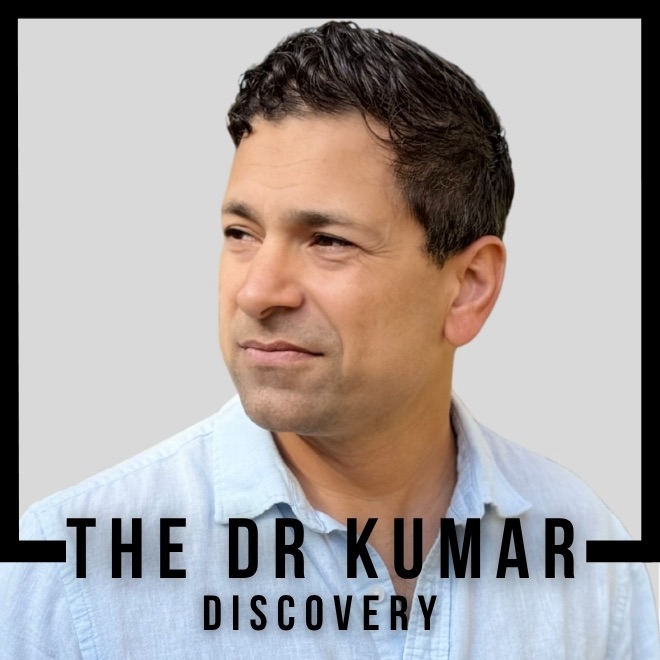What Three Words Ended America’s Polio Terror on April 12, 1955?
“Safe, effective, and potent.” With these words at 10:20 AM EST on April 12, 1955, Dr. Thomas Francis Jr. announced to the world from University of Michigan’s Rackham Auditorium that the Salk polio vaccine was 80-90% effective in preventing paralytic polio. This historic announcement, based on trials involving over 1.8 million children, immediately ended America’s greatest childhood health terror.
Dr. Kumar’s Take
The University of Michigan’s press release captures one of medicine’s most dramatic moments. Francis, Salk’s former mentor, delivered results that parents had desperately awaited - the vaccine worked with remarkable safety (only 0.4% minor reactions) and stunning effectiveness. The data was overwhelming: 4 deaths among placebo recipients, zero among vaccinated children. This wasn’t just a scientific triumph; it was the moment America’s children could finally play freely in summer without their parents’ terror.
What the Research Shows
According to the University of Michigan’s official press release, Dr. Thomas Francis Jr., director of the Poliomyelitis Vaccine Evaluation Center, concluded his two-year national field trials with unprecedented results. The announcement took place at Rackham Auditorium before over 500 scientists and physicians, under penetrating camera lights and powerful spotlights.
The trials represented the largest medical field study in history, involving 1,829,916 children across multiple study areas. Francis, who had been Salk’s mentor when Salk did postgraduate training in the School of Public Health’s Department of Epidemiology, delivered the 113-page report that “called a halt to speculations and finally reinforced laboratory findings with concrete field evidence.”
Study Snapshot
Trial Design and Results:
- Total participants: 1,829,916 children
- Study duration: Two years of field trials
- Effectiveness: 80-90% effective against paralytic polio
- Safety profile: Only 0.4% minor reactions, 0.004-0.006% major reactions
- Total polio cases during study: 1,013 cases developed
- Funding: $7.5 million in March of Dimes funds
Placebo Control Areas (vaccine vs. inert substance):
- Population: 749,236 children
- Polio cases: 428 total cases
- Paralytic cases: 33 vaccinated vs. 115 unvaccinated children
- Deaths: 4 among placebo recipients, 0 among vaccinated
Observed Control Areas (second graders only vaccinated):
- Population: 1,080,680 children
- Polio cases: 585 total cases
- Paralytic cases: 38 vaccinated vs. 330 unvaccinated children
- Deaths: 11 total fatalities, 0 among vaccinated children
Historical Context
The announcement represented the culmination of desperate national effort funded by March of Dimes contributions. The University of Michigan press release noted that the trials were “financed by nearly one million dollars worth of dimes” donated to the National Foundation for Infantile Paralysis.
The timing was crucial - trial areas were carefully selected and showed a 26% increase in polio cases compared to non-trial areas, providing optimal testing conditions. Despite this challenging environment, the vaccine’s protective effect was unmistakable.
Francis emphasized that “what was feared turned out to be unfounded” - the vaccine proved “incredibly safe” with negligible reactions. The protection appeared durable, with good antibody responses maintained “with but moderate decline after five months.”
Why This Matters for Modern Medicine
The University of Michigan announcement established several crucial principles for vaccine evaluation:
Independent Analysis: Francis, as Salk’s former mentor, provided credible independent evaluation rather than having the inventor analyze his own results.
Rigorous Study Design: The use of both placebo-controlled and observed control groups provided multiple validation methods for vaccine effectiveness.
Transparent Communication: The detailed press release provided specific statistics, safety data, and limitations rather than vague claims of success.
Public Health Impact: The announcement immediately transformed public health policy, with mass vaccination campaigns beginning within weeks.
Safety, Limits, and Caveats
The University of Michigan report identified important findings about vaccine performance:
Effectiveness Variation: The vaccine showed greater effectiveness against severe disease forms, with particular success against bulbar polio (affecting breathing muscles).
Geographic Validation: Limited data from Canada and Finland supported the U.S. findings, showing international consistency.
Family Protection: Vaccination protected against household exposure - only 1 of 233 vaccinated children developed polio from family contact versus 8 of 244 placebo recipients.
Sociological Factors: Survey Research Center findings showed higher participation rates among families already engaged in preventive health measures (smallpox, diphtheria, whooping cough vaccination).
Virus Type Specificity: No areas showed Type II virus prevalence, but Types I and III were prevalent in certain regions, affecting vaccine performance.
Practical Takeaways
- Understand the magnitude: 1.8+ million children participated in history’s largest medical trial
- Appreciate rigorous design: Both placebo and observed controls provided multiple validation methods
- Recognize safety success: Only 0.4% minor reactions with virtually no serious adverse events
- Value independent evaluation: Francis analyzing Salk’s vaccine prevented bias and ensured credibility
- Learn from transparency: Detailed public reporting built trust and enabled rapid implementation
- Support sustained funding: $7.5 million in March of Dimes contributions made the breakthrough possible
Related Studies and Research
- The 1954 Salk Vaccine Trial: 1.8 Million Children as Polio Pioneers
- The March of Dimes: How FDR’s Campaign Funded the Polio Vaccine
- 1952: The Year Polio Struck 57,879 Americans - A Record-Breaking Epidemic
- What Is Poliomyelitis? The Virus That Once Terrorized America
- Episode 28: Iron Lungs, Fear, and a Miracle: How We Stopped Polio
FAQs
Why was Thomas Francis chosen to evaluate Salk’s vaccine?
Francis was Salk’s former mentor at the University of Michigan School of Public Health, providing credible independent analysis rather than having the inventor evaluate his own work.
How safe was the Salk vaccine according to the 1955 announcement?
Remarkably safe - only 0.4% of vaccinated children had minor reactions, and serious reactions occurred in just 0.004-0.006% of recipients.
What was the difference between placebo and observed control groups?
Placebo areas used inert substances interchangeably with vaccine, while observed areas only vaccinated second graders, providing two different validation methods.
How quickly did vaccination begin after the announcement?
The press release enabled immediate implementation - pharmaceutical companies began mass production within weeks of the April 12, 1955 announcement.
What made this announcement so historically significant?
It marked the end of America’s greatest childhood health terror with definitive proof that polio could be prevented, transforming summer from a season of fear to freedom for children.
Bottom Line
April 12, 1955 became the day that ended America’s polio terror when Dr. Thomas Francis announced that Salk’s vaccine was “safe, effective, and potent” with 80-90% effectiveness. Based on trials involving over 1.8 million children and funded by March of Dimes contributions, this University of Michigan announcement immediately transformed childhood from a season of fear into an era of protection.


